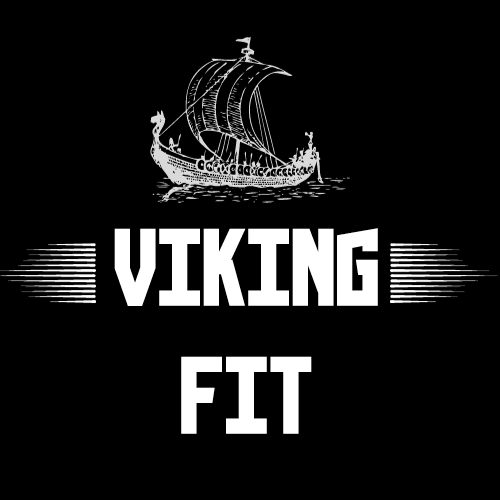Mastering the Hammer Strength Chest Press: Benefits, Technique, and Tips
Table of Contents
Introduction
The Hammer Strength Chest Press has become a cornerstone in gym routines across the globe, thanks to its unique design and effectiveness in targeting the chest muscles. This machine not only provides a safer alternative to traditional free weights but also ensures optimal muscle activation, making it a preferred choice for fitness enthusiasts of all levels. In this comprehensive guide, we will delve deep into the Hammer Strength Chest Press, exploring its benefits, proper technique, common mistakes to avoid, and tips for incorporating it into your workout regimen. Our goal is to provide you with all the information you need to master this exercise and achieve your fitness goals.
What is the Hammer Strength Chest Press?
The Hammer Strength Chest Press is a piece of exercise equipment designed to mimic the motion of a traditional bench press while offering added stability and control. Developed by Hammer Strength, a brand renowned for its biomechanically sound and durable gym equipment, this machine is engineered to align with the body’s natural movements, thereby reducing the risk of injury and enhancing workout efficiency.
Unlike free weights, which require significant stabilization from the lifter, the Hammer Strength Chest Press uses a guided path of motion. This means that the lifter can focus entirely on pushing the weight, resulting in better isolation of the chest muscles. This guided path also makes the exercise accessible to individuals who may struggle with the balance and coordination required for free weight exercises.

Benefits of the Hammer Strength Chest Press
- Isolation of Chest Muscles: One of the primary benefits of the Hammer Strength Chest Press is its ability to target the pectoral muscles more effectively than many other exercises. The guided path of the machine ensures that the chest muscles are the primary movers, reducing the involvement of secondary muscles such as the shoulders and triceps.
- Safety and Stability: The fixed motion path of the Hammer Strength Chest Press makes it a safer option compared to free weight bench presses. This stability is particularly beneficial for beginners or those recovering from injuries, as it minimizes the risk of improper form and related injuries.
- Strength and Hypertrophy: Consistent use of the Hammer Strength Chest Press can lead to significant increases in muscle strength and hypertrophy. The ability to safely lift heavier weights due to the machine’s stability allows for progressive overload, which is essential for muscle growth.
- Versatility: The Hammer Strength Chest Press is suitable for all fitness levels. It allows for easy adjustments in resistance, making it possible to tailor the workout to individual strength levels and progression goals. Additionally, the machine can be used to perform different variations of the chest press, targeting different areas of the pectoral muscles.
- Reduced Joint Stress: The ergonomic design of the machine helps to reduce the stress placed on the joints, particularly the shoulders and elbows. This is especially beneficial for individuals with joint issues or those who experience discomfort when performing traditional bench presses.
- Consistent Tension: Unlike free weights, where tension on the muscles can vary, the Hammer Strength Chest Press provides consistent tension throughout the entire range of motion. This continuous resistance helps in better muscle activation and endurance.

Proper Technique
Mastering the proper technique for the Hammer Strength Chest Press is crucial for maximizing its benefits and minimizing the risk of injury. Here’s a step-by-step guide to ensure you’re performing the exercise correctly:
- Setup: Adjust the seat height so that the handles are at chest level. Sit down and ensure your feet are flat on the floor, providing a stable base.
- Grip: Grasp the handles with a firm, overhand grip. Your wrists should be in line with your forearms, and your grip should be neither too tight nor too loose.
- Starting Position: Press your back firmly against the seat. Keep your chest up and shoulders down and back. Engage your core muscles to stabilize your torso.
- Execution: Push the handles forward until your arms are fully extended, exhaling as you press. Ensure your elbows are slightly bent at the end of the movement to avoid locking out and putting unnecessary stress on the joints.
- Return: Slowly bring the handles back to the starting position, inhaling as you do so. Maintain control throughout the movement, focusing on the contraction of the chest muscles.
- Breathing: Proper breathing is essential. Exhale during the pressing phase (concentric phase) and inhale during the return phase (eccentric phase).
Common Mistakes to Avoid
Even with a machine-based exercise like the Hammer Strength Chest Press, there are common mistakes that can hinder your progress and increase the risk of injury. Here are some pitfalls to watch out for:
- Incorrect Seat Height: Setting the seat too high or too low can misalign your body, reducing the effectiveness of the exercise and increasing the risk of injury. Ensure that the handles are at chest level when you’re seated.
- Locking Elbows: Fully extending your arms and locking your elbows at the end of the press can place undue stress on your joints. Keep a slight bend in your elbows to maintain tension on the chest muscles and protect your joints.
- Rapid Movements: Performing the exercise too quickly can lead to poor form and reduce muscle activation. Focus on controlled, deliberate movements to maximize muscle engagement and minimize the risk of injury.
- Partial Range of Motion: Not fully extending your arms or not bringing the handles back to the starting position limits the effectiveness of the exercise. Ensure you’re using the full range of motion to fully engage the chest muscles.
- Overarching the Back: Pressing with an arched back can shift the focus away from the chest muscles and place undue stress on the lower back. Keep your back pressed against the seat and engage your core to maintain a neutral spine.
- Inconsistent Breathing: Holding your breath or not following the correct breathing pattern can affect your performance and increase the risk of dizziness or lightheadedness. Ensure you’re breathing out as you press and breathing in as you return to the starting position.
Tips for Maximizing Your Workout
To get the most out of your Hammer Strength Chest Press workouts, consider incorporating the following tips:
- Warm-Up: Begin with a light warm-up to prepare your chest muscles and joints for the workout. Dynamic stretches or a few sets with lighter weights can help increase blood flow and reduce the risk of injury.
- Progressive Overload: Gradually increase the resistance to continue challenging your muscles and promoting growth. Aim to increase the weight or the number of repetitions as you get stronger, but do so incrementally to avoid overtraining.
- Mind-Muscle Connection: Focus on feeling your chest muscles working throughout the exercise. This mind-muscle connection can enhance muscle activation and lead to better results. Concentrate on squeezing your pectoral muscles at the top of the movement.
- Variation: Incorporate different grips and angles to target various parts of the chest. For example, using a narrower grip can emphasize the inner chest, while a wider grip can target the outer chest. Additionally, you can adjust the seat to change the angle of the press, hitting the upper or lower chest more effectively.
- Proper Nutrition and Recovery: Ensure you’re fueling your body with the right nutrients to support muscle growth and recovery. Consuming an adequate amount of protein, carbohydrates, and healthy fats, along with staying hydrated, is crucial for optimal performance. Allow sufficient time for recovery between chest workouts to prevent overtraining and promote muscle repair.
- Consistency: Like any exercise, consistency is key. Regularly incorporating the Hammer Strength Chest Press into your workout routine will yield the best results. Aim to perform this exercise at least once or twice a week as part of a balanced chest workout.
- Listen to Your Body: Pay attention to any discomfort or pain while performing the exercise. If you experience sharp pain or persistent soreness, it may be a sign of improper form or overtraining. Adjust your technique, reduce the weight, or take a break if needed to avoid injury.
Incorporating the Hammer Strength Chest Press into Your Routine
Integrating the Hammer Strength Chest Press into your workout routine can vary based on your fitness level and goals. Here are some sample routines for different fitness levels:
Beginner Routine
- Warm-Up: 5-10 minutes of light cardio and dynamic stretches
- Hammer Strength Chest Press: 3 sets of 10-12 reps with moderate weight
- Incline Dumbbell Press: 3 sets of 12 reps
- Chest Flyes: 3 sets of 12-15 reps
- Push-Ups: 3 sets to failure
Intermediate Routine
- Warm-Up: 5-10 minutes of light cardio and dynamic stretches
- Hammer Strength Chest Press: 4 sets of 8-10 reps with heavier weight
- Incline Barbell Press: 4 sets of 8-10 reps
- Cable Crossovers: 4 sets of 12 reps
- Dips: 4 sets to failure
Advanced Routine
- Warm-Up: 5-10 minutes of light cardio and dynamic stretches
- Hammer Strength Chest Press: 5 sets of 6-8 reps with maximum weight
- Incline Dumbbell Press: 5 sets of 8 reps
- Pec Deck Machine: 5 sets of 12 reps
- Weighted Dips: 5 sets to failure
Advanced Techniques and Variations
For those looking to take their Hammer Strength Chest Press workouts to the next level, incorporating advanced techniques and variations can provide an additional challenge and stimulate further muscle growth.
Advanced Techniques
- Drop Sets: Start with a heavy weight and perform as many reps as possible until failure. Immediately reduce the weight and continue performing reps until failure. Repeat this process for 3-4 drops. Drop sets are excellent for increasing muscle endurance and hypertrophy.
- Rest-Pause Sets: Perform a set until failure, rest for 15-20 seconds, and then continue performing reps until failure again. Repeat this cycle for a total of 3-4 mini-sets within one main set. This technique helps in breaking through plateaus and enhancing muscle strength.
- Negative Reps: Focus on the eccentric phase of the movement by lowering the weight slowly (about 3-5 seconds) during the return phase. This technique increases muscle tension and promotes greater muscle damage, leading to hypertrophy.
- Pyramid Sets: Start with a lighter weight and increase the weight with each set while reducing the number of reps. After reaching the heaviest weight, reverse the process by decreasing the weight and increasing the reps. Pyramid sets are effective for building both strength and endurance.
Variations
- Single-Arm Hammer Strength Chest Press: Perform the exercise using one arm at a time. This variation enhances unilateral strength and can help correct muscle imbalances. It also engages the core more as it stabilizes the body during the movement.
- Reverse-Grip Hammer Strength Chest Press: Use a reverse (underhand) grip to target the upper chest and triceps differently. This grip variation can also reduce the stress on the shoulders, making it a good option for those with shoulder issues.
- Incline Hammer Strength Chest Press: Adjust the seat to a higher incline position to emphasize the upper chest. This variation is particularly useful for developing a well-rounded chest.
- Decline Hammer Strength Chest Press: Adjust the seat to a lower decline position to target the lower chest more effectively. This variation helps in achieving a fuller chest appearance.
Combining the Hammer Strength Chest Press with Other Exercises
To create a well-rounded chest workout, it’s beneficial to combine the Hammer Strength Chest Press with other chest exercises. Here are some effective combinations:The Ultimate Guide to Chest Cable Exercises
Chest and Triceps Workout
- Warm-Up: 5-10 minutes of light cardio and dynamic stretches
- Hammer Strength Chest Press: 4 sets of 8-10 reps
- Incline Dumbbell Press: 4 sets of 10 reps
- Chest Flyes: 3 sets of 12-15 reps
- Tricep Dips: 3 sets to failure
- Overhead Tricep Extension: 3 sets of 12 reps
- Tricep Pushdowns: 3 sets of 15 reps
Chest and Shoulder Workout
- Warm-Up: 5-10 minutes of light cardio and dynamic stretches
- Hammer Strength Chest Press: 4 sets of 8-10 reps
- Incline Barbell Press: 4 sets of 8-10 reps
- Dumbbell Flyes: 3 sets of 12 reps
- Shoulder Press: 4 sets of 10 reps
- Lateral Raises: 3 sets of 15 reps
- Front Raises: 3 sets of 15 reps
Full Upper Body Workout
- Warm-Up: 5-10 minutes of light cardio and dynamic stretches
- Hammer Strength Chest Press: 4 sets of 8-10 reps
- Pull-Ups: 4 sets to failure
- Seated Row: 4 sets of 12 reps
- Shoulder Press: 4 sets of 10 reps
- Bicep Curls: 3 sets of 15 reps
- Tricep Pushdowns: 3 sets of 15 reps
Nutrition and Recovery
To maximize the benefits of your Hammer Strength Chest Press workouts, proper nutrition and recovery are essential components of your fitness regimen. Here are some key considerations:
Nutrition
- Protein: Adequate protein intake is crucial for muscle repair and growth. Aim for 1.2 to 2.2 grams of protein per kilogram of body weight, depending on your activity level and fitness goals. Good sources of protein include lean meats, poultry, fish, eggs, dairy, legumes, and plant-based protein powders.
- Carbohydrates: Carbohydrates provide the energy needed for intense workouts. Focus on complex carbohydrates such as whole grains, vegetables, fruits, and legumes to fuel your workouts and aid in recovery.
- Fats: Healthy fats support hormone production and overall health. Include sources of omega-3 fatty acids (found in fish, flaxseeds, and walnuts) and monounsaturated fats (found in avocados, nuts, and olive oil) in your diet.
- Hydration: Staying hydrated is essential for optimal performance and recovery. Aim to drink at least 8-10 glasses of water per day, and increase your intake if you’re sweating heavily during workouts.
- Pre-Workout Nutrition: Consuming a balanced meal or snack 1-2 hours before your workout can enhance performance. Include a combination of protein and carbohydrates, such as a protein shake with a banana or Greek yogurt with berries.
- Post-Workout Nutrition: After your workout, focus on replenishing glycogen stores and repairing muscles. A post-workout meal or snack with protein and carbohydrates, such as a chicken breast with sweet potatoes or a protein shake with oats, is ideal. The Power of Active Care Nutrition Beneficial Guidance To Achieve your Goal 2024

Recovery
- Rest Days: Incorporate rest days into your workout routine to allow your muscles to recover and grow. Overtraining can lead to injury and hinder progress, so ensure you’re giving your body adequate time to heal.
- Sleep: Aim for 7-9 hours of quality sleep per night. Sleep is crucial for muscle recovery, hormone regulation, and overall health. Create a bedtime routine to improve sleep quality, such as limiting screen time before bed and maintaining a consistent sleep schedule.
- Active Recovery: On rest days, engage in light activities such as walking, stretching, or yoga to promote blood flow and aid in recovery without putting additional stress on your muscles.
- Stretching and Mobility: Incorporate stretching and mobility exercises into your routine to improve flexibility, reduce muscle soreness, and prevent injury. Focus on stretching the chest, shoulders, and back muscles after your workouts.
- Massage and Foam Rolling: Regularly using a foam roller or getting a massage can help alleviate muscle tension, improve blood flow, and enhance recovery. Focus on rolling out your chest, shoulders, and back muscles to reduce tightness and promote relaxation.
Conclusion
The Hammer Strength Chest Press is a powerful tool for developing a strong, well-defined chest. By mastering the proper technique, avoiding common mistakes, and incorporating advanced variations, you can maximize the benefits of this exercise and achieve your fitness goals. Remember to combine the Hammer Strength Chest Press with other complementary exercises, maintain a balanced diet, and prioritize recovery to ensure optimal results.
With consistency and dedication, the Hammer Strength Chest Press can become a cornerstone of your chest workout routine, helping you build strength, muscle mass, and overall fitness. Start incorporating this exercise into your workouts today and experience the difference it can make in your chest development and overall training regimen.



